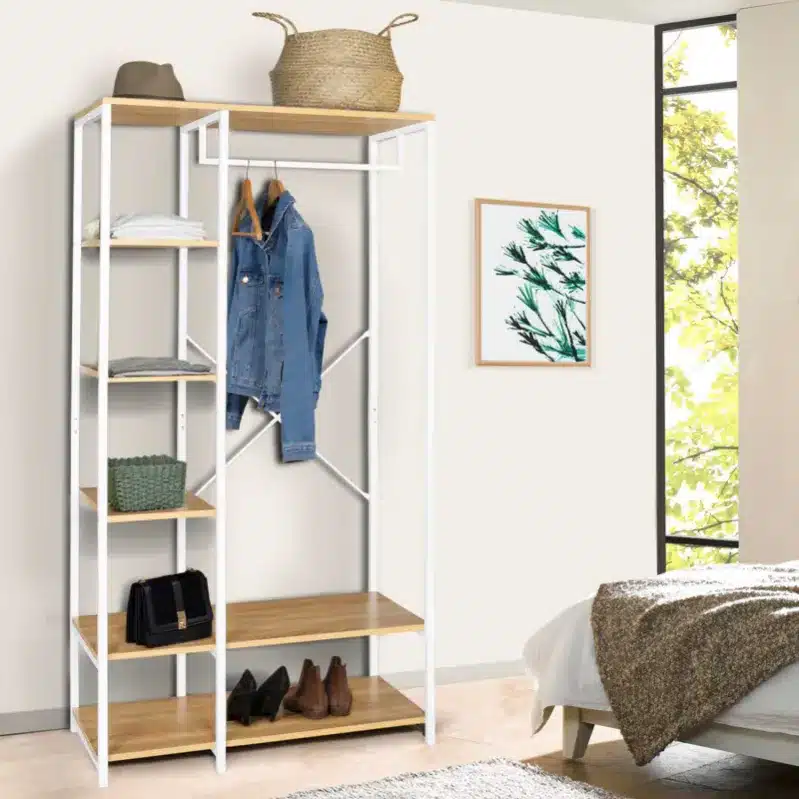How Can You Craft an Ergonomic Craft Room for Long Hours of Sewing?

When you’re passionate about sewing, you’ll likely spend countless hours in your craft room. It’s crucial to tailor this space to your needs and ensure it’s well-organized, comfortable, and conducive to long hours of work. This article will guide you through the process of setting up an ergonomic craft room, with a specific focus on the essential elements: the table setup, optimal lighting, ample storage, and a cutting station.
Crafting the Perfect Sewing Table Setup
The heart of your sewing room is your workspace, often centered around a table. The setup of this critical element can significantly impact your comfort and productivity.
A découvrir également : How to Create a Hidden Folding Ironing Board in a Small Laundry Area?
Selecting the right sewing table is crucial. Consider your available space, the type of sewing you do, and the size of your sewing machine. The table’s height is of paramount importance as it will affect your posture. An adjustable table that allows you to work comfortably both sitting and standing is ideal.
Your sewing machine should be positioned so that the needle aligns with your body’s mid-line, reducing twisting and turning. Your arms should be able to rest comfortably at your sides while you sew, which will decrease shoulder and neck strain. Position the foot pedal so you can easily reach it without stretching your leg or twisting your hip.
A découvrir également : What Are the Ideal Plants for an Indoor Air Purification Garden?
Next to the sewing machine, allocate a designated space for your ironing board. It’s most effective when located within arm’s reach, so you can press as you sew without needing to constantly get up and down.
Ensuring Optimal Lighting
Good lighting is non-negotiable in any crafting room. Adequate light will reduce eye strain and make it easier to see the fine details of your work.
Natural light is the best option, so if possible, set up your workspace near a window. However, don’t rely solely on natural light, as it varies with the time of day and weather conditions.
Invest in quality task lighting, such as an adjustable desk lamp with an LED bulb that emulates daylight. Position the light so that it shines directly on your work area without causing shadows.
Ambient light in the room is also important. It should be bright enough to prevent your eyes from straining, but not so bright that it causes glare on your work surface or sewing machine.
Lastly, consider the color of your lighting. A light source with a high color rendering index (CRI) will allow you to see colors accurately, which is particularly important when matching threads and fabrics.
Designing Effective Storage Solutions
Proper storage is essential in a craft room, not just for organization, but for maintaining a clean and clutter-free work environment.
The type and amount of storage you’ll need depend on the amount of supplies you have. For small items like thread, needles, and buttons, consider using drawer organizers or small bins.
Larger items like fabric bolts and patterns might need larger, dedicated spaces. Shelves or storage cubes can be a great solution for these.
Your cutting tools, including scissors, rotary cutters, and crafting knives, should be stored safely, but also within easy reach. A magnetic strip on the wall or a dedicated drawer can work well for these.
Moreover, consider creating a separate area, such as a rolling cart, to store projects currently in progress. This will keep your main workspace clear and ready for use.
Setting Up a Cutting Station
Having a designated cutting area can enhance your efficiency and safety. This space should accommodate your cutting mat, rulers, and cutters. If space permits, a dedicated cutting table at standing height can save you from bending over, reducing strain on your back and neck.
Your cutting station should be located near your storage area for easy access to your fabrics. It’s also advisable to have a wastebasket nearby for discarded fabric scraps and threads.
Remember, creating an ergonomic sewing room takes time. It’s a process of trial and error, and what works for one person may not work for another. Take the time to figure out what works best for you, and don’t be afraid to make adjustments as needed. The goal is to create a space that allows you to work comfortably for long hours, without compromising your health or creativity.
Crafting an Office Sewing Space
When you’re investing time and energy into your craft, it’s essential to carve out a space dedicated to your sewing activities. This section will guide you in setting up your own office sewing space in a way that optimizes comfort, efficiency, and productivity.
A significant part of your sewing room will be the sewing machine station. If you have the room, opt for a specific sewing cabinet that can house your machine and other essential tools. This can drastically improve your comfort levels, making it easier to spend long hours at the machine. Consider investing in a chair that supports good posture and a footrest that elevates your feet, minimizing strain on your lower back.
In addition to your sewing machine and cutting table, it would be beneficial to have a separate surface for tasks such as pinning, basting, and hand-sewing. This could be a multi-purpose table that can also serve as a flat surface for laying out and cutting fabric. Be mindful of the height of this work surface. It should allow you to sit or stand comfortably without hunching.
We’ve discussed the importance of natural light, but when setting up your office sewing space, it’s critical to consider where your light is coming from. Be wary of shadows that could obscure your work. If possible, position your main work area — your sewing machine and cutting station, for example — so that they are side-lit. This will minimize shadows and make it easier to see your projects.
You’ll also need to think about the arrangement of your craft supplies. Keep frequently-used items within easy reach. Storage solutions such as pegboards, drawer units, or even a simple system of jars and baskets can keep your supplies organized and visible.
Remember: An office sewing space is an ongoing project. Be prepared to change and adjust your setup as your needs evolve.
Conclusion: Creating a Comfortable and Efficient Sewing Room
By following the outlined steps and considerations, you will create a sewing room where you can spend long hours comfortably. From optimizing your sewing table setup and ensuring optimal lighting, to designing effective storage solutions and setting up a dedicated cutting station, each aspect contributes to a more ergonomic and efficient work environment.
With your sewing machine correctly positioned, you can avoid unnecessary strain on your body. The importance of good lighting cannot be overstated. It assists you in accurately matching fabric and thread colors and reduces eye strain. Having ample and well-organized storage solutions helps keep your craft room clutter-free, making it an inviting space to create and be productive.
Remember, this is your creative space. Tailor it to your needs and preferences. Whether you’re a novice just setting up your first sewing space or a seasoned sewer looking to revamp your sewing studio, these tips can guide you towards creating a space that is not only functional but also enjoyable.
And, as we enter the months from August to November, with the shift from warmer to cooler weather, it’s the perfect time to embark on this project. As daylight hours decrease from September to October, the importance of good task lighting in your sewing room becomes even more apparent.
Remember: Trial and error are a part of the process. What works for you might not work for others and vice versa. So, feel free to experiment and adjust your craft room setup as needed. After all, the ultimate goal is to have a sewing room that inspires you to create and allows you to work comfortably for long hours.
